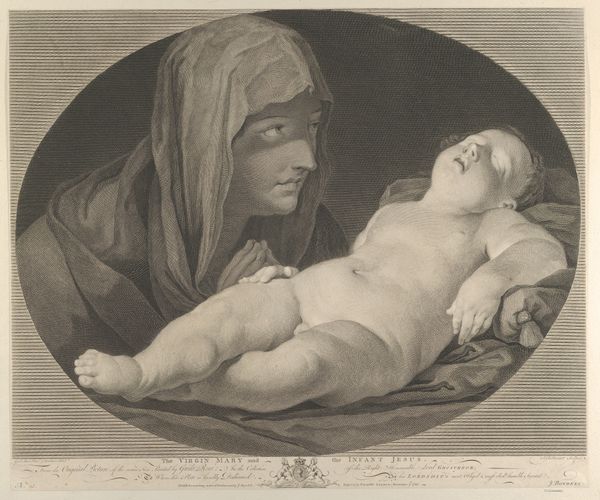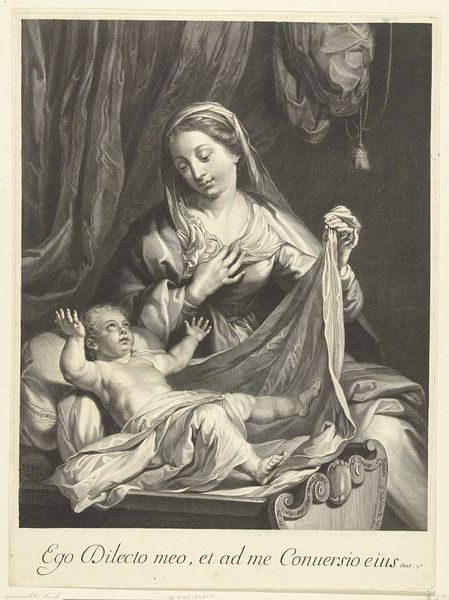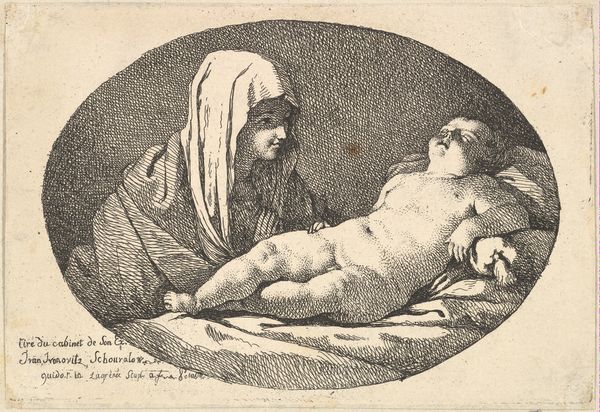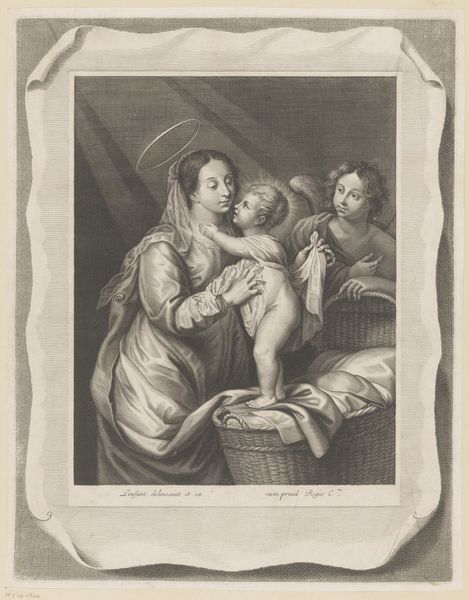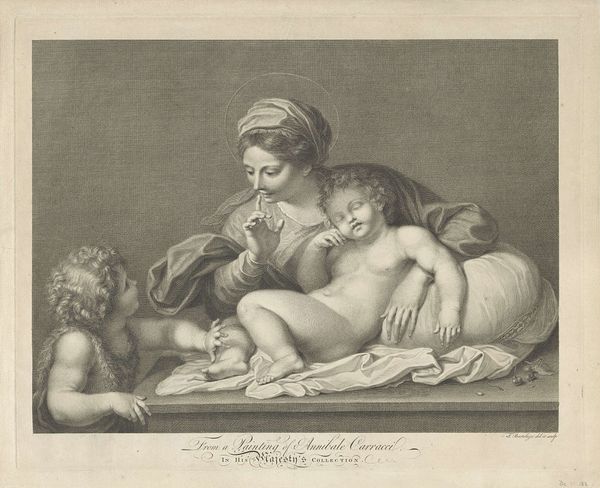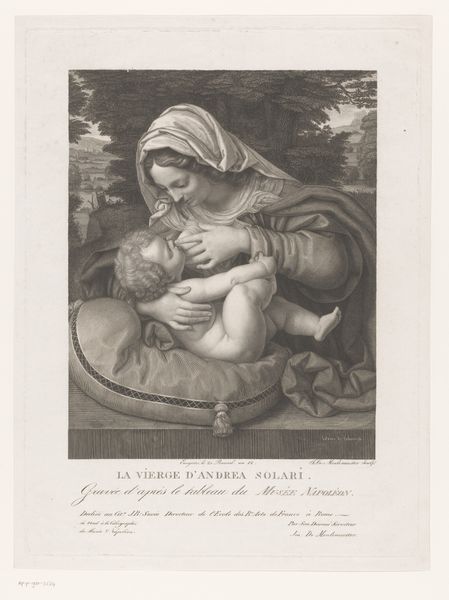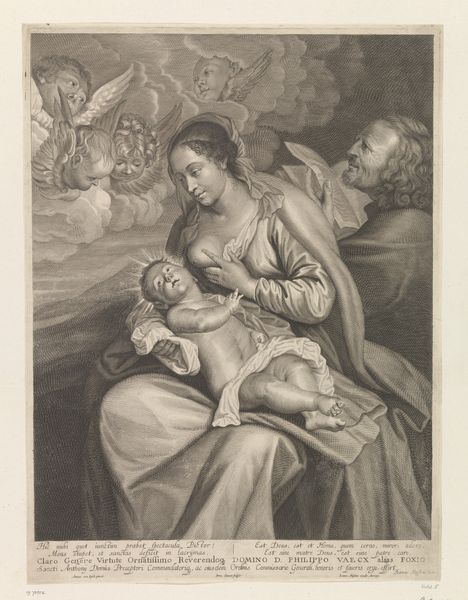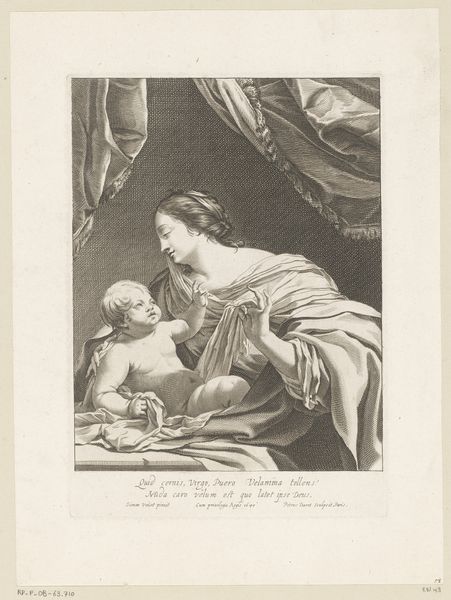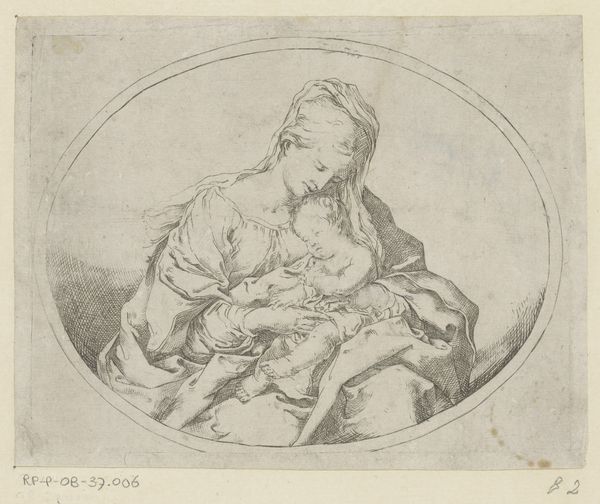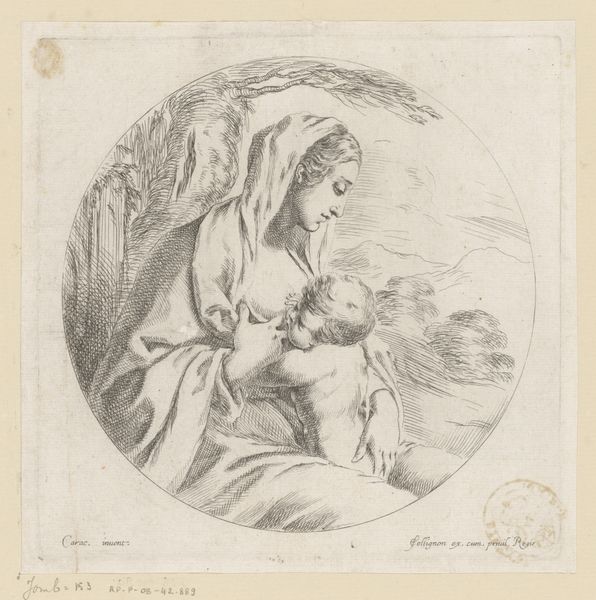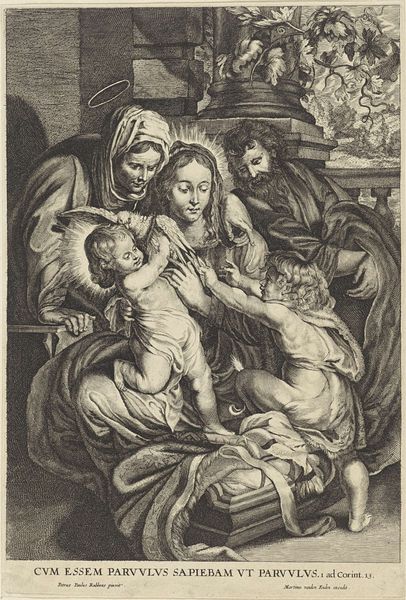
The Virgin with arms crossed over her chest looking at the sleeping infant Christ, in an oval frame, after Reni 1770 - 1834
0:00
0:00
Dimensions: Sheet (Trimmed): 12 5/16 × 13 7/8 in. (31.2 × 35.3 cm)
Copyright: Public Domain
Curator: Welcome to the Metropolitan Museum of Art. We are standing before Ephraim Gottlieb Krüger's engraving, "The Virgin with arms crossed over her chest looking at the sleeping infant Christ, in an oval frame, after Reni," created sometime between 1770 and 1834. Editor: The image is immediately striking in its tenderness. There's a quietude, almost a stillness that radiates from the Virgin’s gaze and the Christ Child's peaceful sleep. The oval frame gives it a sense of intimacy, like looking into a private moment. Curator: Indeed. This work presents us with a compelling example of the pervasive influence of earlier Italian masters, such as Guido Reni, on graphic arts during the late 18th and early 19th centuries in Germany. The emphasis here is less on direct artistic invention and more on the refinement of existing visual conventions. Editor: The Virgin's crossed arms resonate with centuries of depictions portraying women burdened by sorrow and grief. Although, what strikes me is how the artist frames her role, almost underlining both devotion and maybe a premonition. I wonder what socio-political statements are implicit when visualizing motherhood? Curator: That’s a valid reading. However, within its historical context, such displays of emotionality would have resonated profoundly within a religious milieu increasingly affected by Enlightenment rationality, offering solace via conventional, affective imagery. The print medium, of course, allowed this imagery to disseminate widely. Editor: Yes, the act of replication becomes significant. I can see how prints like this would serve to normalize certain visual tropes of motherhood, but I find myself curious as to how viewers historically, and how we contemporarily, can challenge how traditional narratives influence or inform current conversations around the identity, gender, and power of marginalized communities. Curator: I agree. To consider Krüger's Virgin outside the context of religious doctrine and institutional dissemination does it a disservice, despite its complicated historical ramifications. The piece encapsulates religious art, and, to a broader extent, visual art’s capacity to instill certain morals. Editor: A beautiful thought that perfectly resonates. Despite different opinions, I would like to close this intervention with the awareness that our interpretation of Krüger's piece must engage its complexities. It really urges one to explore history and contemporary interpretation together, encouraging more nuanced and self-aware ways of regarding the world, not only the history of art.
Comments
No comments
Be the first to comment and join the conversation on the ultimate creative platform.
